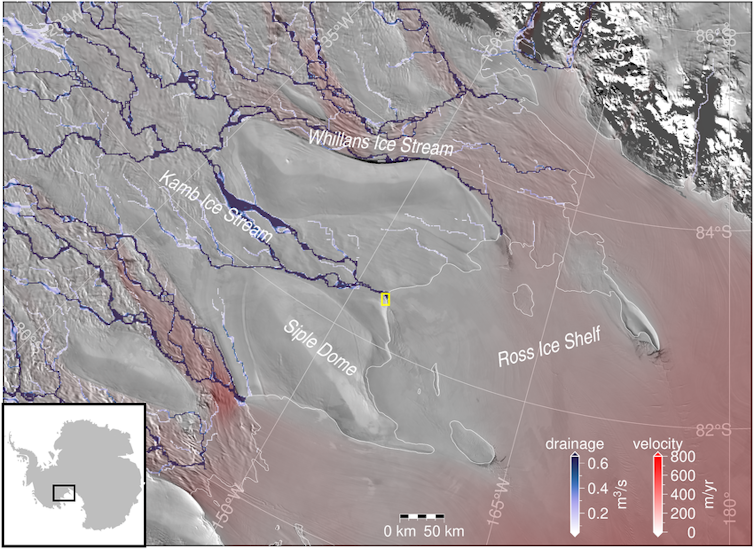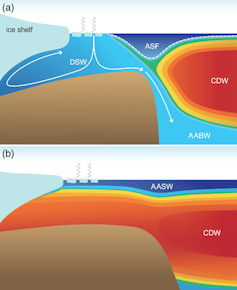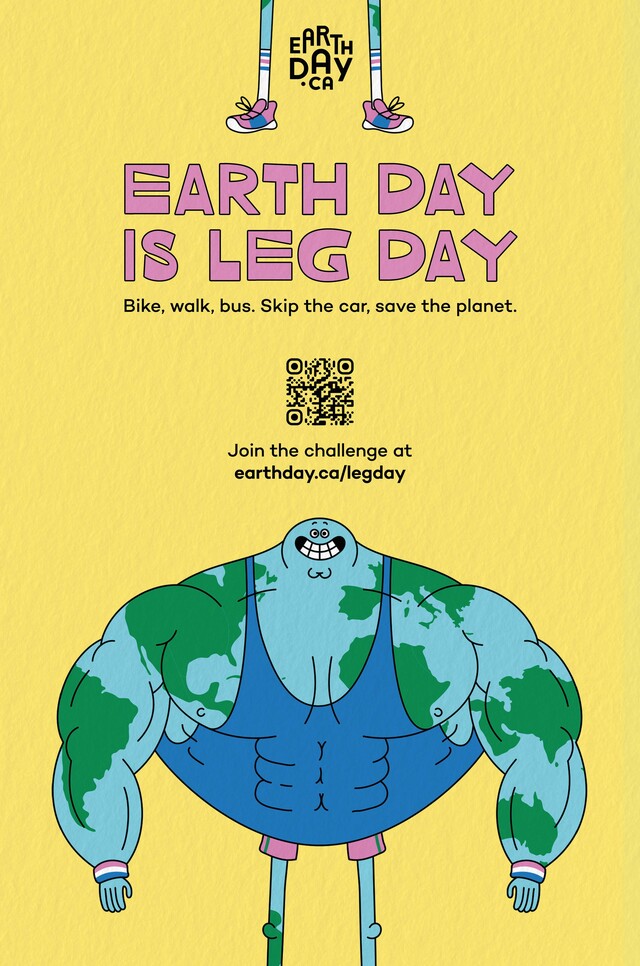Science
London A.I. Lab Claims Breakthrough That Could Accelerate Drug Discovery – The New York Times

Some scientists spend their lives trying to pinpoint the shape of tiny proteins in the human body.
Proteins are the microscopic mechanisms that drive the behavior of viruses, bacteria, the human body and all living things. They begin as strings of chemical compounds, before twisting and folding into three-dimensional shapes that define what they can do — and what they cannot.
For biologists, identifying the precise shape of a protein often requires months, years or even decades of experimentation. It requires skill, intelligence and more than a little elbow grease. Sometimes they never succeed.
Now, an artificial intelligence lab in London has built a computer system that can do the job in a few hours — perhaps even a few minutes.
DeepMind, a lab owned by the same parent company as Google, said on Monday that its system, called AlphaFold, had solved what is known as “the protein folding problem.” Given the string of amino acids that make up a protein, the system can rapidly and reliably predict its three-dimensional shape.
This long-sought breakthrough could accelerate the ability to understand diseases, develop new medicines and unlock mysteries of the human body.
Computer scientists have struggled to build such a system for more than 50 years. For the last 25, they have measured and compared their efforts through a global competition called the Critical Assessment of Structure Prediction, or C.A.S.P. Until now, no contestant had even come close to solving the problem.
DeepMind solved the problem with a wide range of proteins, reaching an accuracy level that rivaled physical experiments. Many scientists had assumed that moment was still years, if not decades, away.
“I always hoped I would live to see this day,” said John Moult, a professor at the University of Maryland who helped create C.A.S.P. in 1994 and continues to oversee the biennial contest. “But it wasn’t always obvious I was going to make it.”
As part of this year’s C.A.S.P., DeepMind’s technology was reviewed by Dr. Moult and other researchers who oversee the contest.
If DeepMind’s methods can be refined, he and other researchers said, they could speed the development of new drugs as well as efforts to apply existing medications to new viruses and diseases.
The breakthrough arrives too late to make a significant impact on the coronavirus. But researchers believe DeepMind’s methods could accelerate the response to future pandemics. Some believe it could also help scientists gain a better understanding of genetic diseases along the lines of Alzheimer’s or cystic fibrosis.
Still, experts cautioned that this technology would affect only a small part of the long process by which scientists identify new medicines and analyze disease. It was also unclear when or how DeepMind would share its technology with other researchers.
DeepMind is one of the key players in a sweeping change that has spread across academia, the tech industry and the medical community over the past 10 years. Thanks to an artificial intelligence technology called a neural network, machines can now learn to perform many tasks that were once beyond their reach — and sometimes beyond the reach of humans.
A neural network is a mathematical system loosely modeled on the network of neurons in the human brain. It learns skills by analyzing vast amounts of data. By pinpointing patterns in thousands of cat photos, for instance, it can learn to recognize a cat.
This is the technology that recognizes faces in the photos you post to Facebook, identifies the commands you bark into your smartphone and translates one language into another on Skype and other services. DeepMind is using this technology to predict the shape of proteins.
If scientists can predict the shape of a protein in the human body, they can determine how other molecules will bind or physically attach to it. This is one way drugs are developed: A drug binds to particular proteins in your body and alters their behavior.
By analyzing thousands of known proteins and their physical shapes, a neural network can learn to predict the shapes of others. In 2018, using this method, DeepMind entered the C.A.S.P. contest for the first time and its system outperformed all other competitors, signaling a significant shift. But its team of biologists, physicists and computer scientists, led by a researcher named John Jumper, were nowhere close to solving the ultimate problem.
In the two years since, Dr. Jumper and his team designed an entirely new kind of neural network specifically for protein folding, and this drove an enormous leap in accuracy. Their latest version provides a powerful, if imperfect, solution to the protein folding problem, said the DeepMind research scientist Kathryn Tunyasuvunakool.
The system can accurately predict the shape of a protein about two-thirds of the time, according to the results of the C.A.S.P. contest. And its mistakes with these proteins are smaller than the width of an atom — an error rate that rivals physical experiments.
“Most atoms are within an atom diameter of where they are in the experimental structure,” said Dr. Moult, the contest organizer. “And with those that aren’t, there are other possible explanations of the differences.”
Andrei Lupas, director of the department of protein evolution at the Max Planck Institute for Developmental Biology in Germany, is among those who worked with AlphaFold. He is part of a team that spent a decade trying to determine the physical shape of a particular protein in a tiny bacteria-like organism called an archaeon.
This protein straddles the membrane of individual cells — part is inside the cell, part is outside — and that makes it difficult for scientists like Dr. Lupas to determine the shape of the protein in the lab. Even after a decade, he could not pinpoint the shape.
With AlphaFold, he cracked the problem in half an hour.
If these methods continue to improve, he said, they could be a particularly useful way of determining whether a new virus could be treated with a cocktail of existing drugs.
“We could start screening every compound that is licensed for use in humans,” Dr. Lupas said. “We could face the next pandemic with the drugs we already have.”
During the current pandemic, a simpler form of artificial intelligence proved helpful in some cases. A system built by another London company, BenevolentAI, helped pinpoint an existing drug, baricitinib, that could be used to treat seriously ill Covid-19 patients. Researchers have now completed a clinical trial, though the results have not yet been released.
As researchers continue to improve the technology, AlphaFold could further accelerate this kind of drug repurposing, as well as the development of entirely new vaccines, especially if we encounter a virus that is even less understood than Covid-19.
David Baker, the director of the Institute for Protein Design at the University of Washington, who has been using similar computer technology to design anti-coronavirus drugs, said DeepMind’s methods could accelerate that work.
“We were able to design coronavirus-neutralizing proteins in several months,” he said. “But our goal is to do this kind of thing in a couple of weeks.”
Still, development speed must contend with other issues, like massive clinical trials, said Dr. Vincent Marconi, a researcher at Emory University in Atlanta who helped lead the baricitinib trial. “That takes time,” he said.
But DeepMind’s methods could be a way of determining whether a clinical trial will fail because of toxic reactions or other problems, at least in some cases.
Demis Hassabis, DeepMind’s chief executive and co-founder, said the company planned to publish details describing its work, but that was unlikely to happen until sometime next year. He also said the company was exploring ways of sharing the technology itself with other scientists.
DeepMind is a research lab. It does not sell products directly to other labs or businesses. But it could work with other companies to share access to its technology over the internet.
The lab’s biggest breakthroughs in the past have involved games. It built systems that surpassed human performance on the ancient strategy game Go and the popular video game StarCraft — enormously technical achievements with no practical application. Now, the DeepMind team are eager to push their artificial intelligence technology into the real world.
“We don’t want to be a leader board company,” Dr. Jumper said. “We want real biological relevance.”
Science
West Antarctica's ice sheet was smaller thousands of years ago – here's why this matters today – The Conversation


As the climate warms and Antarctica’s glaciers and ice sheets melt, the resulting rise in sea level has the potential to displace hundreds of millions of people around the world by the end of this century.
A key uncertainty in how much and how fast the seas will rise lies in whether currently “stable” parts of the West Antarctic Ice Sheet can become “unstable”.
One such region is West Antarctica’s Siple Coast, where rivers of ice flow off the continent and drain into the ocean.
Journal of Geophysical Research, CC BY-SA
This ice flow is slowed down by the Ross Ice Shelf, a floating mass of ice nearly the size of Spain, which holds back the land-based ice. Compared to other ice shelves in West Antarctica, the Ross Ice Shelf has little melting at its base because the ocean below it is very cold.
Although this region has been stable during the past few decades, recent research suggest this was not always the case. Radiocarbon dating of sediments from beneath the ice sheet tells us that it retreated hundreds of kilometres some 7,000 years ago, and then advanced again to its present position within the last 2,000 years.
Figuring out why this happened can help us better predict how the ice sheet will change in the future. In our new research, we test two main hypotheses.
Read more:
What an ocean hidden under Antarctic ice reveals about our planet’s future climate
Testing scenarios
Scientists have considered two possible explanations for this past ice sheet retreat and advance. The first is related to Earth’s crust below the ice sheet.
As an ice sheet shrinks, the change in ice mass causes the Earth’s crust to slowly uplift in response. At the same time, and counterintuitively, the sea level drops near the ice because of a weakening of the gravitational attraction between the ice sheet and the ocean water.
As the ice sheet thinned and retreated since the last ice age, crustal uplift and the fall in sea level in the region may have re-grounded floating ice, causing ice sheet advance.

AGU, CC BY-SA
The other hypothesis is that the ice sheet behaviour may be due to changes in the ocean. When the surface of the ocean freezes, forming sea ice, it expels salt into the water layers below. This cold briny water is heavier and mixes deep into the ocean, including under the Ross Ice Shelf. This blocks warm ocean currents from melting the ice.

AGU, CC BY-SA
Seafloor sediments and ice cores tell us that this deep mixing was weaker in the past when the ice sheet was retreating. This means that warm ocean currents may have flowed underneath the ice shelf and melted the ice. Mixing increased when the ice sheet was advancing.
We test these two ideas with computer model simulations of ice sheet flow and Earth’s crustal and sea surface responses to changes in the ice sheet with varying ocean temperature.
Because the rate of crustal uplift depends on the viscosity (stickiness) of the underlying mantle, we ran simulations within ranges estimated for West Antarctica. A stickier mantle means slower crustal uplift as the ice sheet thins.
The simulations that best matched geological records had a stickier mantle and a warmer ocean as the ice sheet retreated. In these simulations, the ice sheet retreats more quickly as the ocean warms.
When the ocean cools, the simulated ice sheet readvances to its present-day position. This means that changes in ocean temperature best explain the past ice sheet behaviour, but the rate of crustal uplift also affects how sensitive the ice sheet is to the ocean.

Veronika Meduna, CC BY-SA
What this means for climate policy today
Much attention has been paid to recent studies that show glacial melting may be irreversible in some parts of West Antarctica, such as the Amundsen Sea embayment.
In the context of such studies, policy debates hinge on whether we should focus on adapting to rising seas rather than cutting greenhouse gas emissions. If the ice sheet is already melting, are we too late for mitigation?
Our study suggests it is premature to give up on mitigation.
Global climate models run under high-emissions scenarios show less sea ice formation and deep ocean mixing. This could lead to the same cold-to-warm ocean switch that caused extensive ice sheet retreat thousands of years ago.
For West Antarctica’s Siple Coast, it is better if we prevent this ocean warming from occurring in the first place, which is still possible if we choose a low-emissions future.
Science
NASA's Voyager 1 resumes sending engineering updates to Earth – Phys.org


For the first time since November, NASA’s Voyager 1 spacecraft is returning usable data about the health and status of its onboard engineering systems. The next step is to enable the spacecraft to begin returning science data again. The probe and its twin, Voyager 2, are the only spacecraft to ever fly in interstellar space (the space between stars).
Voyager 1 stopped sending readable science and engineering data back to Earth on Nov. 14, 2023, even though mission controllers could tell the spacecraft was still receiving their commands and otherwise operating normally. In March, the Voyager engineering team at NASA’s Jet Propulsion Laboratory in Southern California confirmed that the issue was tied to one of the spacecraft’s three onboard computers, called the flight data subsystem (FDS). The FDS is responsible for packaging the science and engineering data before it’s sent to Earth.
The team discovered that a single chip responsible for storing a portion of the FDS memory—including some of the FDS computer’s software code—isn’t working. The loss of that code rendered the science and engineering data unusable. Unable to repair the chip, the team decided to place the affected code elsewhere in the FDS memory. But no single location is large enough to hold the section of code in its entirety.
So they devised a plan to divide affected the code into sections and store those sections in different places in the FDS. To make this plan work, they also needed to adjust those code sections to ensure, for example, that they all still function as a whole. Any references to the location of that code in other parts of the FDS memory needed to be updated as well.


The team started by singling out the code responsible for packaging the spacecraft’s engineering data. They sent it to its new location in the FDS memory on April 18. A radio signal takes about 22.5 hours to reach Voyager 1, which is over 15 billion miles (24 billion kilometers) from Earth, and another 22.5 hours for a signal to come back to Earth. When the mission flight team heard back from the spacecraft on April 20, they saw that the modification had worked: For the first time in five months, they have been able to check the health and status of the spacecraft.
During the coming weeks, the team will relocate and adjust the other affected portions of the FDS software. These include the portions that will start returning science data.
Voyager 2 continues to operate normally. Launched over 46 years ago, the twin Voyager spacecraft are the longest-running and most distant spacecraft in history. Before the start of their interstellar exploration, both probes flew by Saturn and Jupiter, and Voyager 2 flew by Uranus and Neptune.
Provided by
NASA
Citation:
NASA’s Voyager 1 resumes sending engineering updates to Earth (2024, April 22)
retrieved 22 April 2024
from https://phys.org/news/2024-04-nasa-voyager-resumes-earth.html
This document is subject to copyright. Apart from any fair dealing for the purpose of private study or research, no
part may be reproduced without the written permission. The content is provided for information purposes only.
Science
Osoyoos commuters invited to celebrate Earth Day with the Leg Day challenge – Oliver/Osoyoos News – Castanet.net


Osoyoos commuters can celebrate Earth Day as the Town joins in on a national commuter challenge known as “Leg Day,” entering a chance to win sustainable transportation prizes.
The challenge, from Earth Day Canada, is to record 10 sustainable commutes taken without a car.
“Cars are one of the biggest contributors to gas emissions in Canada,” reads an Earth Day Canada statement. “That’s why, Earth Day Canada is launching the national Earth Day is Leg Day Challenge.”
So far, over 42.000 people have participated in the Leg Day challenge.
Participants could win an iGo electric bike, public transportation for a year, or a gym membership.
The Town of Osoyoos put out a message Monday promoting joining the national program.
For more information on the Leg Day challenge click here.
-
Business16 hours ago
Honda to build electric vehicles and battery plant in Ontario, sources say – Global News
-



 Science16 hours ago
Science16 hours agoWill We Know if TRAPPIST-1e has Life? – Universe Today
-
Investment19 hours ago
Down 80%, Is Carnival Stock a Once-in-a-Generation Investment Opportunity?
-



 Health16 hours ago
Health16 hours agoSimcoe-Muskoka health unit urges residents to get immunized
-



 Health13 hours ago
Health13 hours agoSee how chicken farmers are trying to stop the spread of bird flu – Fox 46 Charlotte
-



 Science21 hours ago
Science21 hours agoWatch The World’s First Flying Canoe Take Off
-
News21 hours ago
Honda expected to announce multi-billion dollar deal to assemble EVs in Ontario
-



 Investment14 hours ago
Investment14 hours agoOwn a cottage or investment property? Here's how to navigate the new capital gains tax changes – The Globe and Mail







